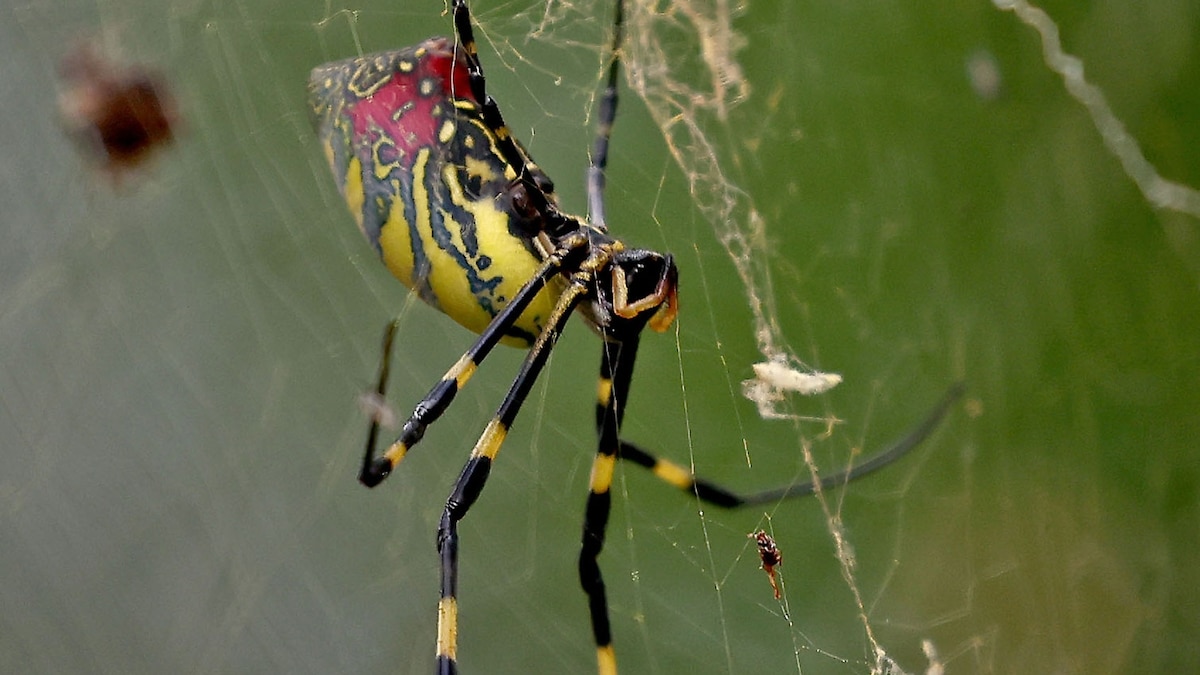So it was curious when Davis and his team started seeing signs of cannibalism among joro females. First it was a female clutching another female in a web. Then it was an attack in an aquarium into which two females had been placed. And finally, a fight to the death when the researchers released two joro spiders at the same time. While female joro spiders occasionally munch on mates, fighting amongst themselves has never been seen before.
Why do joro spiders fight?
Davis’s students captured joro spiders (Trichonephila clavata) and staged meetings to look for hints about what spurs aggression. When 25 pairs of similarly sized females met in a plastic food storage container, fights broke out 40 percent of the time, the team reported July 10 in Arthropoda. In some bouts, the spiders ripped each other’s legs off, while in others, the winner sunk its fangs into the loser, Davis says. Usually larger spiders have an advantage in combat, so Davis’s team was surprised to see that, in 27 meetings of differently sized females, cage fights happened only 18 percent of the time, and larger spiders didn’t always instigate the conflict,.
But Tupperware isn’t the joro’s usual stomping ground, and that might influence the spiders’ behavior. Joro spiders have long legs adapted for darting around a web, says ecologist Erin Grabarczyk of Valdosta State University in Georgia who wasn’t part of the work. “Put them on the ground and they look like a baby deer—they sort of wobble around.” It’s possible the food storage container stressed the spiders, she says.

